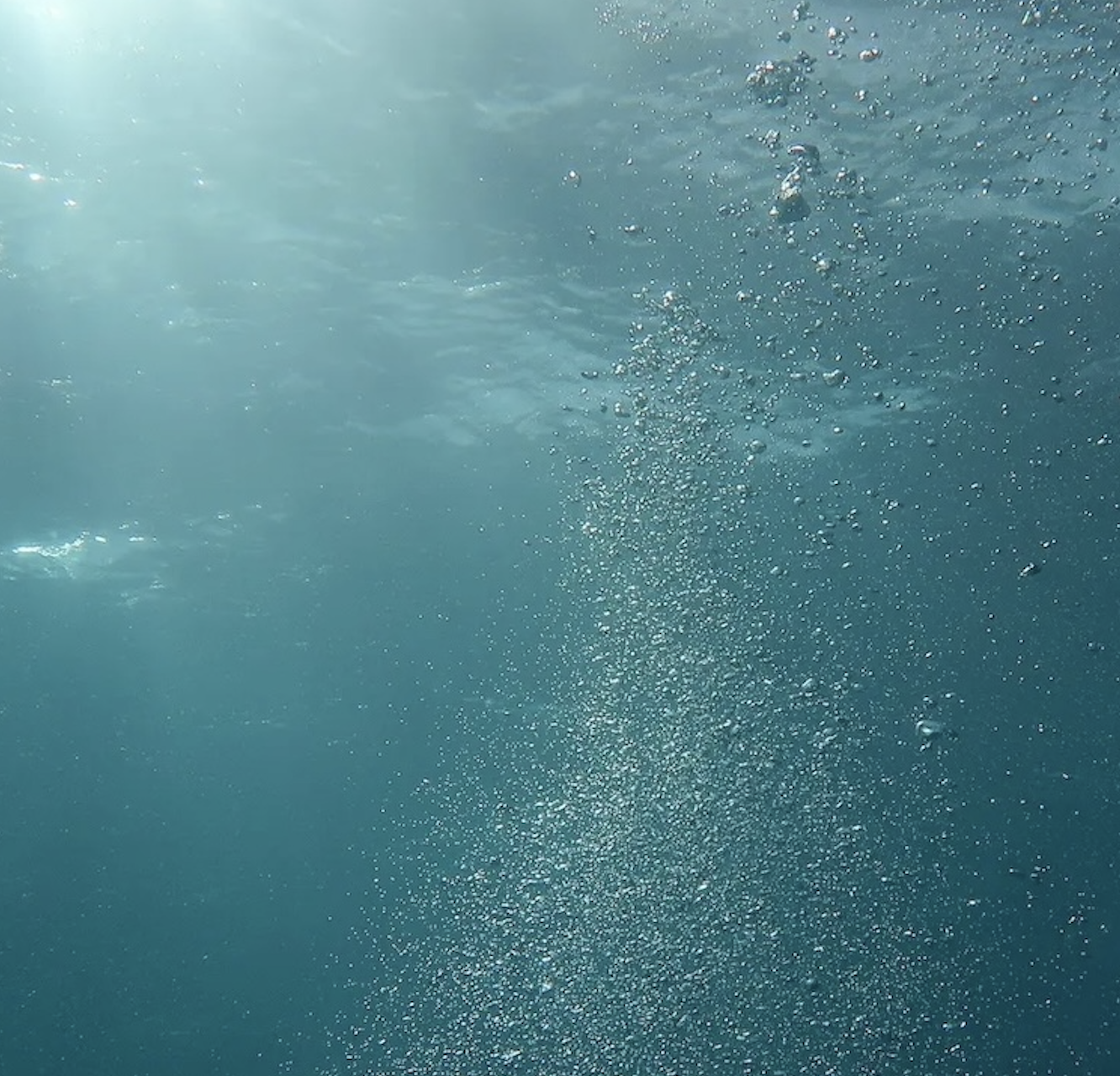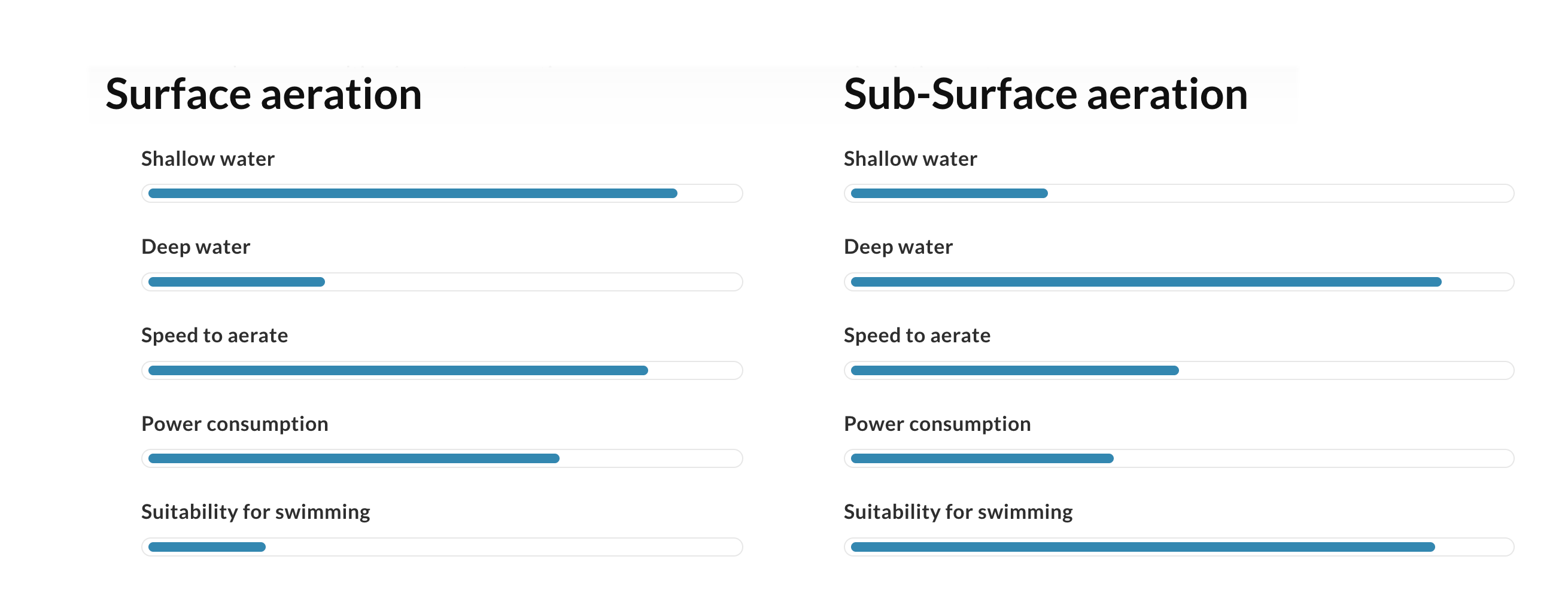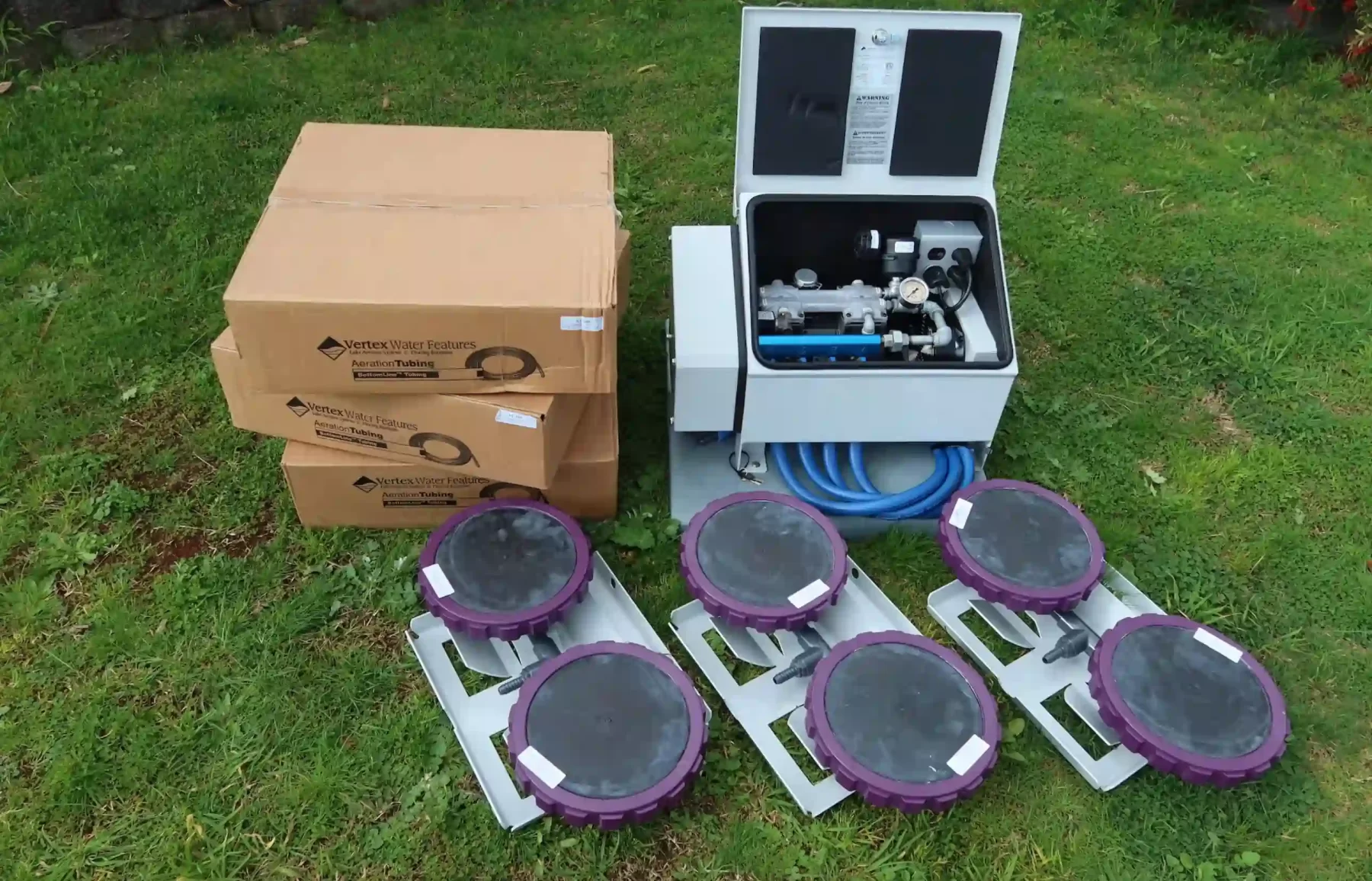Aeration is crucial for waterbodies like dams, ponds, and lakes, and can significantly improve the condition of each one. Aerators are excellent tools to use to aerate water. There are two main types: surface aerators and sub-surface aerators.
Surface aerators sit on the water and move the water and oxygen around, creating sprays or fountains. They look good and are a popular aesthetic choice. They also add oxygen quickly, and are especially handy in shallow dams.
Sub-surface aerators are a bit different as they use air stations that sit quietly on the bottom of your dam or pond. Instead of moving water around at the surface, they pump air down to the bottom and create bubbles that rise and mix the whole waterbody.
Because they’re pumping air (not water), they use a lot less energy and they work well in deeper dams where surface aerators start to lose their punch.
In this blog, we’ll take a closer look at air stations, exploring how they work, the science behind oxygen transfer, and the key components that make up a high-performing sub-surface aeration system.
What Is an Air Station?
An air station is essentially the workhorse of a sub-surface system. It’s a diffuser that sits on the bottom of a waterbody and is connected to an air compressor on land through tubing.
The compressor sends air down the line, and the air station turns it into a stream of bubbles that rise to the surface. As they move upwards, the bubbles drag low-oxygen water up from the bottom and replace it with freshly oxygenated water from the surface.
The thing to remember is that the bubbles themselves aren’t “injecting” oxygen. The real oxygenation happens when that water hits the surface and mixes with the atmosphere. The bubbles just do the heavy lifting of moving water around.
How Do Air Stations Actually Work?
Here is a step-by-step process of how air stations work:
1. Air Is Pumped Down
The land-based compressor pumps regular air (the same air you breathe) into the tubing.
2. The Diffuser Makes Bubbles
At the bottom, the air station turns that air into streams of fine bubbles.
3. Bubbles Create Lift
As bubbles rise, they pull oxygen-poor bottom water up to the surface.
4. Oxygen In, Gases Out
At the surface, water picks up fresh oxygen from the atmosphere and releases bad gases like hydrogen sulphide.
Surface vs Sub-Surface Aeration
Both surface and sub-surface aerators have their place and key features. But often the best solution is a mix of the two.
Let’s take a look at their key differences:
Surface Aerators
- Fastest way to get oxygen into water and therefore great in emergencies.
- Add visual appeal with fountains or spray.
- Best suited for shallow water under 2m.
Sub-Surface Aerators
- Pump air, not water. Therefore, they’re much more energy-efficient.
- Mix the entire water column, not just the surface.
- Completely safe for swimming dams (no power in the water).
- Perfect for deeper waterbodies over 5m.
Pro Tip: Combine both systems for the healthiest water. A surface aerator handles fast oxygenation at the top, while sub-surface stations mix the deeper water. Together, they cover every angle.
What Makes Up a Sub-Surface Aeration System?
A good system isn’t just an air station. It’s a package of components that all play a part:
- Compressor: This sits on shore and powers the system. It usually runs on mains electricity, solar, or even wind.
- Weighted Tubing: This carries air to the bottom. Weighted tubing is best because non-weighted tubing floats on the surface, kind of like spaghetti, and just gets in the way.
- Air Station/s (Diffuser/s): This breaks air into fine bubbles. Materials like EPDM rubber or ceramic help keep them efficient and clog-resistant.
- Cabinet or Housing: This protects the compressor from weather and reduces noise. If you don’t have a suitable shed or pump house, a ventilated cabinet is a must. But if you already have a protected space, we also sell sub-surface compressors without the cabinet. This gives you a more cost-effective option without compromising performance.
- Check Valves & Manifolds: These make sure air is distributed evenly and prevent backflow when the system switches off.
Matala vs Vertex: Our Favourite Air Stations
At WQS, we recommend two standout options, depending on your needs.
Matala Air Stations – Simple & Affordable
- Self-weighted, so they stay put without extra anchors.
- EPDM membranes resist clogging and last for years.
- Available in single, dual, or quad setups.
- Perform well at low to moderate air volumes.
- Cost-effective and low maintenance.
Best for: Smaller to mid-size ponds and budget-conscious landowners who still want reliable aeration.
Vertex Air Stations – Premium & Powerful
- Self-weighted air stations.
- Micron-bubble technology: ultra-fine bubbles for maximum lift.
- Bases made from stainless steel or composite for long life.
- Self-cleaning membranes keep maintenance low.
- Each diffuser can move up to 1,000 gallons per minute at depth.
- Suitable for both freshwater and marine environments.
Best for: Larger, deeper lakes where efficiency, durability, and water quality are top priorities.
Final Thoughts
An air station doesn’t inject oxygen directly but it moves water in a way that makes natural surface oxygenation incredibly effective. It’s simple, low-energy, and backed by solid science.
- Have a shallow dam? A surface aerator might be all you need.
- Got deeper water? A sub-surface system is the way to go.
- Want the absolute best? Combine both for a fully mixed, fully oxygenated waterbody.
At the end of the day, think of air stations as the circulation system for your dam. They’re always helping to move and mix your water.
Get FREE Advice
Need help choosing? We offer free advice on the best aeration system for your property. Simply fill in this form and one of our product specialists will be in touch to help you find the right setup for you.






